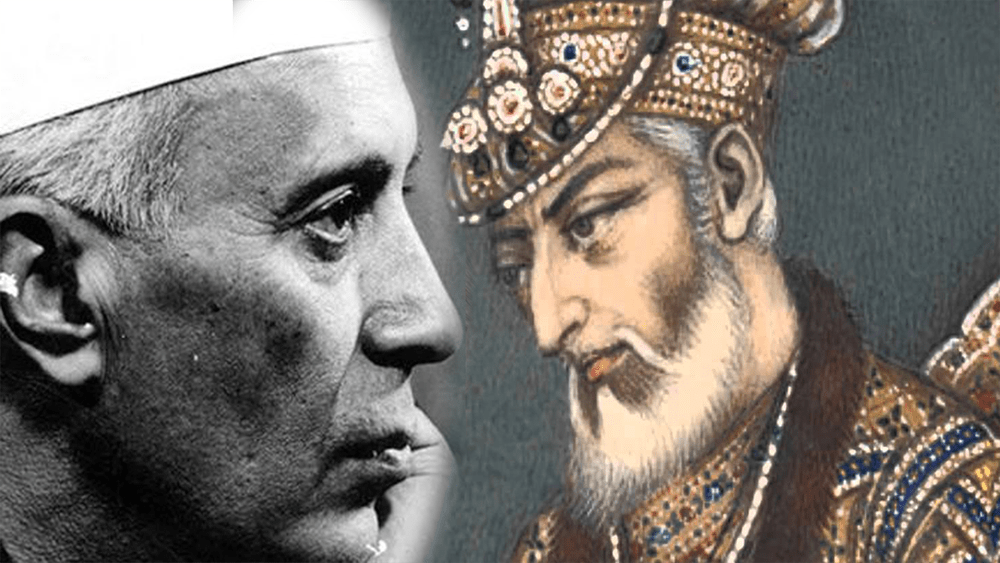Muhammad Tariq Ghazi
One Dr Mohammad Asif Khan, in a posting on a popular net-group NRIndians, narrated a purported historical fact. China captured the Mount Kailash in the Himalayan Range, which Hindus believe as the abode of one of their gods Shiva. Following this, Indian Prime Minister Jawaharlal Nehru rightly protested in the United Nations. The Beijing government replied that the mountain actually belonged to China which was conquered 282 years ago in 1580 by the reigning Indian emperor (Aurangzeb).
Referring to UN and Indian parliament’s documents as well as books like History of Uttaranchal by O C Handa (born in Mandi, Himachal Pradesh, on 2 October 1936) and The Tragedy of Tibet by Man Mohan Sharma (Trishul Publications, Noida. 2008), Dr Khan said that since the Mount Kailash was sacred for his Hindu subjects, Aurangzeb wrote to China’s Qing Emperor Shunzhi to return the area to India. Upon hearing nothing from China, Aurangzeb launched a military campaign, regained the territory and gifted it back to Hindu devotees of his empire.
Although Dr Khan did not cite evidence directly from the purported document or the two books (above details about the books provided by this writer) the disclosure is quite interesting and demands further historical research, at least by the author of the posting.
Prima facie, the posting sheds fresh light on Aurangzeb’s character as an Indian ruler who was a benefactor of Hindus, not their enemy. The disclosure shows that a condemned Muslim ruler of India had the courage of bringing back a Hindu sacred site for Hindus and a Pandit ruler of India lost it again to China. Ironically, due to the line taken by leaders and writers like Lala Lajpat Rai, Bal Ganagadhar Tilak, and Bankim Chandra Chatterjee that a unified nation was first reduced to rival communities, ultimately forcing break-up of political unity and blaming it solely on Muslims. However, this blame game is not going to serve any purpose as it didn’t in the last 72 years.
It is a sad historical fact that some ill-informed sections of Indian people denigrate two Muslims rulers–Alauddin Khilji and Aurangzeb Alamgir– although both of them were two great benefactors of India by unifying this landmass into one country under single central rule from Delhi. Before them (except under Ashoka, according to some historians) India was never a single political entity. War manual known as Mahabharata, whatever its historical authenticity, denotes that India of that time was divided into scores of independent kingdoms whose rulers with their armies had joined either Pandawa or Kaurava.
A modern Bengali historian Devdan Chaudhari (How Hindus Became Hindus. Daily O. Open to Opinion. 17 October 2017) states that “in 515 BC when Persian Emperor Darius I had annexed Indus Valley to his empire, trans-Indus subcontinent stood divided into 16 Maha Janapadas (kingdoms/empires).”
Another Indian historian Radhakumud Mookerji (The Fundamental Unity of India – referred to by Rama Shankar Tripathi in History of Ancient India), Urdu translation Qadeem Hindustan Ki Tarikh published by GOI’s Qaumi Council Baraye Farogh-e Urdu Zaban. 1998), says that “Before the arrival of Muslims big empires rose in northern India like waves in an ocean and then disappeared. Power-hungry eyes fell on trans-Vindhya region but whole of India did never come under single king. . . . Lack of political unity in ancient India is the weakest factor of our history.” (Refer to this author’s biographical encyclopedia, Tazkar ul Ansar. 2018. Mumbai. 407)
Now, the point raised by Dr Mohammad Asif Khan about the loss of the Kailash region to China may be looked at from other than geopolitical angle. Political geography of the world is very much like cloud patters. These patterns never remain the same. Waves and velocity of air keep them changing constantly. Large swathes of the realm of Aurangzeb’s India are no longer India of today.
Let us look around. Peoples of three continents that once constituted the great Ottoman Empire are now scattered into almost 40 independent nations. Italians of today cannot even dream of Julius Caesar’s Roman Empire. Today nobody knows what will be world’s political geography in 2150 CE. It is pointless then to blame this or that person or group of people because individuals and social masses act like clouds in the wind. History’s due is paid only when we remember and appreciate efforts of those who served humanity around them in the available manner, and then we juxtapose contribution of these people to actions of those who harmed a given society or a set of peoples.
In Indian perspective I prefer to study Lajpat Rai, Bankim Chandra Chatterjee, Tilak, Hed’gewar, Golwalkar, Jinnah, Nehru, Patel, Clive, Hastings, Curzon, Mountbatten etc not as free-standing historic personalities but against the backdrop of the histories of Chandragupta Maurya, Ashoka, Harshvardhan, Alauddin Khilji, Aurangzeb, Bakht Khan Rohilla, Muhammad Qasim Nanautawi, Abul Kalam Azad, Gandhi. Such study guides us to better understanding of events and actions, counteractions and reactions of different persons at a specific moment in time.
I believe this approach to unfolding or past history when analyzed and written down can open up windows of opportunities to future generations as and when they find themselves in the midst of such political windstorms like the break-up of the Ottoman Empire after 800 years, or end of the British Raj within a short time of 90 years.
Present generation of South Asia has a right to know about the logic of what is taught as freedom struggle and how did the previous two generations weathered windstorm of the Fall of the Raj. That question turns the wheel of history
India, like any other nation, can learn from its past by looking at history as a sequence of actual events, not psyche-soothing myths. People lose their way into wilderness by fabricating history. This is the last lesson for Indians of today.
Tariq Ghazi is an Indian-Canadian thinker, writer and journalist

